- What does organic mean?
- While many think of organic farming as something new that has gained in popularity since the 1980s, it is actually very old and indeed the traditional or original form of agriculture – how farming was always done. As such, we can tap its roots deep into the annals of so-called ‘primitive’ civilizations, by tracking back some 12,000 years and beyond into prehistory.
British Botanist Sir Albert Howard is considered to be the father of modern organic agriculture, which can be dated back to the early twentieth century.
1. As an agricultural advisor in India, Sir Howard’s study of agriculture there convinced him of India’s practices as superior over the prevailing science of the time. This belief led to his book, an Agricultural Testament, published in 1943, in which he describes the concept he dubbed “The Law of Return”, a cornerstone of organic farming today.
2. The Law of Return, like what it implies, mimics a natural forest environment where the remains of all dead plants and animals are naturally returned to the soil enriching it with organic matter or humus. Minerals are recycled and made available to NEW plant and animal life through this natural process
3. So, in practice, The Law of Return, necessitates giving back to the soil what plants naturally deplete by always introducing available organic waste materials that represent a good balance of carbon and nitrogen – the decomposition and mineralization of that material is the work of NATURE. Sir Howard called this phenomenon “The Living Bridge”.
ORGANIC FARMING is all about growing food in a “living” soil that is biologically diverse, dynamically stable, and always nurtured by the grower. This concept is juxtaposed to nurturing the plant with food or “fertilizer” – CONVENTIONAL FARMING - What does GMO mean?
- Genetically modified organisms are plants or animals that have had their DNA (genetic material comprising their genome) altered in a lab or through some human agency usually for an economic purpose. Fundamentally, there are two kinds of GMO’s, Cisgenic and transgenic. The former applies to plants or animals that have had their genome changed with DNA from organisms within the same species. In contrast, the latter involves the addition of a gene from another species. In both cases, the behavior and/or function of the organism is altered to serve some human interest. In nature, hybrids occur when one species naturally crosses with another, i.e. the female organ or part becomes fertilized (or pollinated) by the male organ or part. In some cases, these crosses in nature between organisms occur over centuries and even millenniums – corn is a good case in point, as it was once upon a time a grass and did not grow ears. By mimicking these natural events, plant and animal breeders can select for desirable traits in animals and plants using more conventional, yet modernized breeding techniques – F1 hybrids are an example.
- Why do farmers use antibiotics?
- Farmers originally used antibiotics to treat sick animals (e.g. pink eye, liver infections) – veterinarians administered meds parenterally (subcutaneously); however, when disease spread and large numbers of cattle needed to be treated, it quickly became cost prohibitive to use a needle. Instead, large producers mixed antibiotics with feed and water and treated herds orally. Eventually this practice led to the use of antibiotics as a prophylactic (preventatively). In the 1970’s, Concentrated Animal Feeding Operations (CAFO) began administering these meds in massive quantities subtherapeutically (for weight gain).
- What are the most common livestock illnesses treated with antibiotics?
- Historically for beef, Wooden Tongue, Blackleg, Pinkeye, Foot Rot were among the most common. More recently, Anaplasmosis and liver abscesses have joined the ranks of the more frequently treated diseases.
For poultry, Fowl Cholera and Infectious Coryza top the list. There are numerous viruses that also inflict poultry.
For swine, Atrophic Rhinitis (a nasal disease), Brucellosis (an intestinal disease), Clostridium Perfringens (an intestinal disease) are among the most common. Like with poultry, there are viruses as well, some of which can cause severe diarrhea. - How are these illnesses born?
- There are many livestock diseases, some of which are naturally occurring and others that are human induced. For example, ticks can act as a natural vector for transmitting anaplasmosis and other livestock diseases (e.g. Babesiosis). On the other hand, Mad Cow Disease is caused by using animal parts in cattle feed, a human choice.
Livestock diseases like parasites and Pink Eye can be be fly-born by flies laying their eggs on cow manure, soil born like Foot Rot caused by the bacterium Fusobacterium necrophorum, and food-born like Liver Disease and Bloat. Some studies even point to air-born diseases or the transmission of known diseases like Mad Cow through the air.
In most cases, the occurrence and spread of disease can be limited and contained through wise and disciplined practices that include – but are not limited to – diverse and natural feed, the frequent rotation of grazing cattle (mimicking the wild Buffalo), veterinarian practices (e.g. administering antibiotics using a squeeze shoot and a sterile needle), good soil management, and polyculture systems that rotate multiple farm animals from paddock to paddock. - Why do farmers and purveyors of ruminant animals (having a four-chambered stomach) feed them grain?
- Most livestock producers raising ruminants today feed them grain because agricultural industry shifted from predominantly fiber (e.g. grass, legumes, brassicas) to cereals mainly after WW II. What caused this shift was a combination of events including the advent of synthetic nitrogen for production of corn et. al., the uneconomical practice of pasturing ruminants for weight gain, and predatory issues. During the second half of the 20th century, the pace of this feeding practice accelerated through the use of GMOs, the sub-therapeutic use of antibiotics (for fat gain) and massive government subsidies in billions/year to grow corn.
- Why should ruminants eat grass, not grain?
- Ruminants should eat grass, not grain because that is what they were naturally designed to ingest. Their specialized four-chamber stomach is home to resident microbes (e.g. bacteria) that aid in the digestive process of converting fiber like grass into food molecules to nourish their bodies and the microbes that live there. Weight gain happens naturally and through healthy and sustainable grazing practices that begin with fertile and non-compacted soils and are enhanced through a diverse fiber-based diet.
When cows eat corn, 1) they do not feed their microbes with the right foods essential to their health and survival, 2) they suffer from excessive gases and bloating, and 3) their stomach becomes acidified (cows’ stomachs maintain a neutral PH unlike humans) causing leaky stomachs and pathological bacteria to enter bloodstream, which leads to liver disease and death.
Author: Web Developer
Microbiome
- 1.What can I do to support my microbiome health?
- a.Avoid antibiotics, unless absolutely necessary b. Eat lots of fibrous plants, organic, if possible c. Plant a garden and grow some of your own food d. Skip the hand santizer e. Filter your water with a good quality filter f. Avoid over the counter drugs to treat minor symptoms of colds
- 2.What should I be eating for a healthy microbiome?
- There is no perfect solution given the choices in the Western diet. The best advance for the healthy microbiome is to eat a more fresh, whole foods based diet. Michael Pollen’s advise is to “Eat real food, mostly plants”. Avoid processed and prepackaged foods and cook at home as much as possible. Fermented foods can be helpful in restoring your gut flora but always pay attention to what your body is telling you after you eat. Your body will let you know.
- 3.How do lifestyle choices impact our microbiome?
- In addition to the food, the products we use to clean our homes, brush out teeth, wash our bodies along with the water we drink and bath with have the potential to disrupt our microbiomes.
- 4.Should I take a probiotic to restore my microbiome after a course of antibiotics?
- Before taking a probiotic after a course of antibiotics, it is best to allow your system to rest a bit. Most probiotic formulas on the market today are not designed specifically for post-antibiotic restoration and they will typically decrease the pH of the GI tract making it more acidic. This can actually make it more difficult for the system to initially rebalance. Focus, first on foods that can heal the gut and balance the pH, then consider adding a probiotic later. The Microbiome Diet has some great suggestions for microbiome restoring foods.
- 5. What’s the biggest threat to our microbiome?
- The overuse of antibiotics and our processed, nutrient-poor diet. We’re killing off our microbes with unnecessary antibiotics, and then starving the ones that remain by not feeding them the right stuff.
Martha Carlin
Martha began her career with Arthur Andersen after graduating with honors from the University of Kentucky with a degree in accounting. Her early training at Andersen included a process called “transaction flow revenue” which built her foundation in complex systems thinking. This process follows the flow of transactions in a business to identify weak points and systemic risk. Martha continued to apply this systems-based thinking throughout her career and life, to solve complex problems in new ways .
Martha spent more than twenty years in business consulting and real estate operations for two of the largest real estate investment trusts in the US, becoming an expert in business turnarounds and systems-based solutions to improve operations. locked0 L

In 2002, her young husband was diagnosed with Parkinson’s diseas and Martha began to apply her turnaround skills to the task of understanding this complex disease. Martha is a self-taught scientist who studied across many subjects including plant and soils biology, nutrition, chemistry, molecular biology, infectious disease, genetics, epigenetics, proteins, neuroscience and many others in search of something beyond point solutions to approach complex disease.
In 2015, Martha began to dedicate her full attention to the turnaround of chronic disease, including Parkinson’s, funding research at the University of Chicago with Dr. Jack Gilbert to build a metagenomic time series set of data.
Later that year, Martha and Jack founded The BioCollective, LLC along with Dr. Suzanne Vernon, formerly of the CDC, to build an innovation engine for pattern recognition across the population and to accelerate product development for microbiome products. Since founding the company they have built a sample base of subjects age 1 to 102 across various health states, isolated and cultured more than 250 new strains of bacteria for product development, and developed AI tools and metabolic modeling to identify patterns in disease and enable rapid product development. They have filed patents for targeted therapeutics as well as methods of collection and their unique BioCollector™. Their BioFlux™ Metabolic Model has enabled the rapid proto-typing of products targeting glucose metabolism, antibiotic resistance, sleep, TCA cycle/energy metabolism and others. The company is privately funded by Carlin and small group of private investors.
This website is a resource for those interested in the growing epidemic facing our communities. Research experts listed on this website are not liable for any content on this website. We have simply listed them so that the public is aware of the great research being done to address modern epidemics. Please come back to the site often as we grow our resources.
Our Ecosystem
Below are a few recommended books. If you have any other must-read suggestions please send them our way for review.
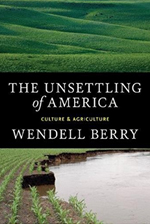
The Unsettling of America: Culture & AgricultureLyme: The First Epidemic of Climate Change
Wendell Berry contests that good farming is a cultural and spiritual discipline, and discusses that as a nation we are more estranged from the land then we have ever been before. Other noteworthy books include Our Only World and Letters to a Farmer. Read more here…
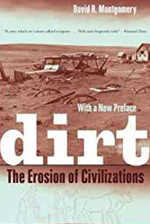
Dirt: the Erosion of Civilizations
An engaging natural and cultural history of soil from ancient civilizations to modern times, Dirt: The Erosion of Civilizations explores the idea that we are―and have been―using up Earth’s soil.
Read more…
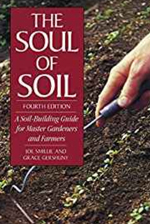
The Soul of Soil: A Soil-Building Guide for Master Gardeners and Farmers
The Soul of Soil provides essential information about one of the most significant challenges for those attempting to grow organic vegetables: the creation and maintenance of healthy soil.
Read reviews and buy.
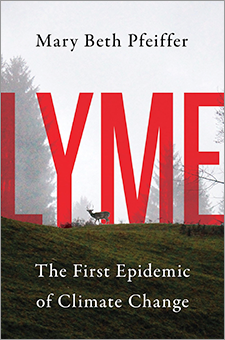
Lyme: The First Epidemic of Climate Change
Lyme: The First Epidemic of Climate Change is the first book to explore the link between a warmer world and the explosion of what has become an everyday menace in the lives of millions: ticks. Read review or click here to read more.
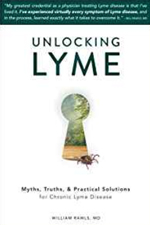
Unlocking Lyme
Get an overview of common misconceptions about what Lyme disease is (hint: it’s more than just a tick bite and Borrelia infection). Discover the limitations of long-term antibiotic use, plus learn about natural therapies for healing symptoms (including pain, depression, insomnia). Read more.
Rise of diseases
Lorem Ipsum
Microbiome
Below are a few recommended books on the Microbiome.
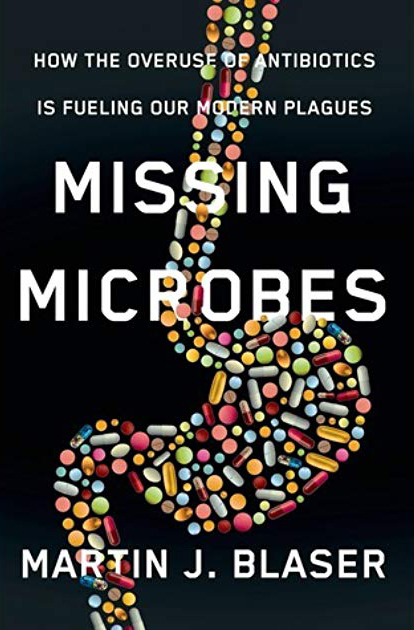
Missing Microbes
Dr. Martin Blaser discusses his hypothesis that the overuse of antibiotics, c-sections, and antiseptics has permanently changed our microbiome and are causing an increase in modern diseases such as obesity, juvenile diabetes, and asthma.
Read reviews and buy now.
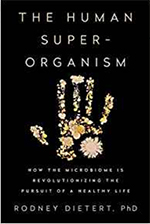
The Human Superorganism: How the microbiome is revolutionizing the pursuit of a healthy life
The Human Superorganism explains the trillions of microbes that co-habitate within us, and delivers must-have information for how we can harness their power to prevent disease and thrive alongside them.
Read reviews and buy now.
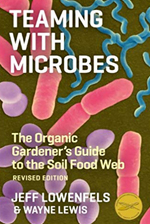
Teaming with Microbes
Healthy soil is teeming with life — not just earthworms and insects, but a staggering multitude of bacteria, fungi, and other microorganisms.
Read reviews and buy now.
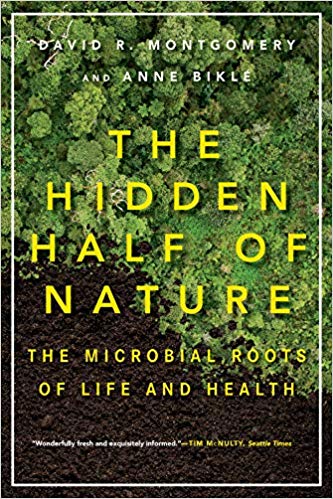
The Hidden Half of Nature
The Hidden Half of Nature reveals why good health―for people and for plants―depends on Earth’s smallest creatures. The authors show why cultivating beneficial microbiomes in the garden holds the key to transforming agriculture and medicine.
Read reviews and buy now.

Oxygen: The molecule that made the world
Oxygen explaining modern killer diseases, why we age, and what we can do about it. Nick Lane has written other noteworthy books including:
- Sex, Power and Suicide
- The Vital Question
Read reviews and buy now.
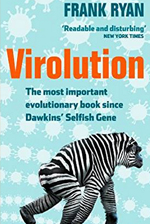
Virolution
The extraordinary role of viruses in evolution and how this is revolutionizing biology and medicine.
Read reviews and buy now.
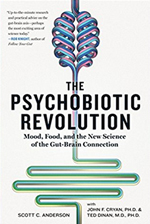
The Psychobiotic Revolution: Mood, Food, and the New Science of the Gut-Brain Connection
This groundbreaking book explains the revolutionary new science of psychobiotics and the discovery that your brain health and state of mind are intimately connected to your microbiome.
Read reviews and buy now.
Martin J. Blaser, MD
Dr. Blaser’s studies focus on bacteria of the human microbiome including Campylobacter and Helicobacter species that live in the mucus layer overlying the mucosal epithelium of mammals, including humans. At the lab in NYU they explore the biology of colonization and the nature of the interactions that lead to (or protect from) disease. For the normal microbiome, they study how early life perturbations affect host developmental phenotypes. On-going work focuses on the metabolic syndrome, and specifically on obesity and type 2 diabetes, as well as inflammatory disorders such as type 1 diabetes, asthma, psoriasis, and skin infections.
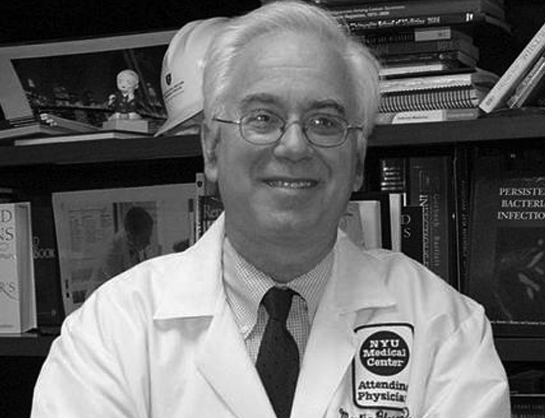
This website is a resource for those interested in the growing epidemic facing our communities. Research experts listed on this website are not liable for any content on this website. We have simply listed them so that the public is aware of the great research being done to address modern epidemics. Please come back to the site often as we grow our resources.
The Human microbiome in jeopardy.
Lorem ipsum dolor sit amet, consectetur adipiscing elit. Pellentesque lacinia dignissim felis, laoreet placerat quam posuere in. In sit amet velit ut sem facilisis elementum. Phasellus posuere erat ac eros mattis molestie. Proin posuere placerat dolor, in mollis nisi rhoncus sed. Aenean vitae erat ut arcu viverra dignissim sit amet sit amet nulla. Quisque blandit, justo quis auctor hendrerit, arcu eros vestibulum tortor, a cursus tellus nunc ut velit. Integer pellentesque arcu ut ornare dictum. Curabitur vitae velit sed neque pellentesque dictum eget in metus. Nunc et tellus vel arcu malesuada vestibulum in quis ex.
Praesent rutrum justo in leo commodo, sit amet maximus urna maximus. Mauris tempor sapien ex, nec venenatis nisl ornare nec. Suspendisse aliquam ultricies sem, vitae ornare lacus consectetur vitae. Vivamus felis ex, sollicitudin at mi at, consectetur dictum ipsum. Vestibulum posuere tristique ex a placerat. Curabitur ac tincidunt ex. Cras fringilla, leo sit amet vulputate dapibus, tellus risus tempus turpis, eget blandit elit diam non tortor. Nam laoreet lectus et nibh malesuada consectetur. Nulla cursus mollis ex, sed gravida massa porta ut. Donec volutpat fringilla metus quis dictum. In sed purus ex.
Donec nec feugiat ante. Mauris ac libero lobortis, hendrerit tortor sed, posuere arcu. Nulla facilisi. Praesent vel ex a nibh venenatis feugiat nec a neque. Nunc aliquet tincidunt purus eget porttitor. Donec vel velit volutpat, bibendum metus nec, semper magna. Phasellus volutpat urna volutpat eleifend posuere. Nulla et risus vel metus dapibus ultricies vitae sed felis. Duis eget urna non eros tristique tincidunt. Etiam posuere eget nisi a mattis. Vestibulum at turpis quis tellus viverra bibendum. Nunc molestie orci eget mauris gravida placerat. Vestibulum cursus purus sit amet dui pharetra interdum. Cras sed lorem massa. Aliquam sapien libero, semper sed nulla eu, cursus finibus justo. Etiam ut mi consectetur, scelerisque sapien at, convallis risus.
Proin nec auctor augue. Phasellus sed ornare magna. Proin in sem vulputate, egestas diam ut, hendrerit quam. Vestibulum nec orci lobortis, imperdiet ante id, consequat mi. Vestibulum ut libero non lorem vehicula cursus sed quis velit. Etiam rhoncus turpis lectus, id viverra ipsum maximus eu. Aliquam non pulvinar erat, a rutrum enim. Curabitur ut velit id ex elementum facilisis. Proin arcu nunc, viverra ac luctus ut, hendrerit facilisis nulla.
Vivamus ultrices posuere rhoncus. Duis ac velit enim. Ut pellentesque lectus eros, sed tincidunt quam porta sit amet. Vestibulum laoreet eleifend neque, non molestie lacus elementum non. Nulla iaculis nunc non lacus semper porttitor. Morbi tempor sed lacus ut ultrices. In urna lorem, porta quis nisl at, tempus aliquet turpis. Sed laoreet elementum eleifend. Suspendisse potenti. Pellentesque enim sapien, vestibulum a purus vel, luctus imperdiet felis. Cras massa erat, imperdiet ultricies ex eget, cursus lacinia dui. Suspendisse ultrices, magna volutpat feugiat pharetra, ipsum tortor volutpat dolor, quis efficitur odio ligula et arcu. Ut ornare quam eu ipsum luctus blandit.
Dolore fungi on nunummy
Lorem ipsum dolor sit amet, consectetur adipiscing elit. Pellentesque lacinia dignissim felis, laoreet placerat quam posuere in. In sit amet velit ut sem facilisis elementum. Phasellus posuere erat ac eros mattis molestie. Proin posuere placerat dolor, in mollis nisi rhoncus sed. Aenean vitae erat ut arcu viverra dignissim sit amet sit amet nulla. Quisque blandit, justo quis auctor hendrerit, arcu eros vestibulum tortor, a cursus tellus nunc ut velit. Integer pellentesque arcu ut ornare dictum. Curabitur vitae velit sed neque pellentesque dictum eget in metus. Nunc et tellus vel arcu malesuada vestibulum in quis ex.
Praesent rutrum justo in leo commodo, sit amet maximus urna maximus. Mauris tempor sapien ex, nec venenatis nisl ornare nec. Suspendisse aliquam ultricies sem, vitae ornare lacus consectetur vitae. Vivamus felis ex, sollicitudin at mi at, consectetur dictum ipsum. Vestibulum posuere tristique ex a placerat. Curabitur ac tincidunt ex. Cras fringilla, leo sit amet vulputate dapibus, tellus risus tempus turpis, eget blandit elit diam non tortor. Nam laoreet lectus et nibh malesuada consectetur. Nulla cursus mollis ex, sed gravida massa porta ut. Donec volutpat fringilla metus quis dictum. In sed purus ex.
Donec nec feugiat ante. Mauris ac libero lobortis, hendrerit tortor sed, posuere arcu. Nulla facilisi. Praesent vel ex a nibh venenatis feugiat nec a neque. Nunc aliquet tincidunt purus eget porttitor. Donec vel velit volutpat, bibendum metus nec, semper magna. Phasellus volutpat urna volutpat eleifend posuere. Nulla et risus vel metus dapibus ultricies vitae sed felis. Duis eget urna non eros tristique tincidunt. Etiam posuere eget nisi a mattis. Vestibulum at turpis quis tellus viverra bibendum. Nunc molestie orci eget mauris gravida placerat. Vestibulum cursus purus sit amet dui pharetra interdum. Cras sed lorem massa. Aliquam sapien libero, semper sed nulla eu, cursus finibus justo. Etiam ut mi consectetur, scelerisque sapien at, convallis risus.
Proin nec auctor augue. Phasellus sed ornare magna. Proin in sem vulputate, egestas diam ut, hendrerit quam. Vestibulum nec orci lobortis, imperdiet ante id, consequat mi. Vestibulum ut libero non lorem vehicula cursus sed quis velit. Etiam rhoncus turpis lectus, id viverra ipsum maximus eu. Aliquam non pulvinar erat, a rutrum enim. Curabitur ut velit id ex elementum facilisis. Proin arcu nunc, viverra ac luctus ut, hendrerit facilisis nulla.
Vivamus ultrices posuere rhoncus. Duis ac velit enim. Ut pellentesque lectus eros, sed tincidunt quam porta sit amet. Vestibulum laoreet eleifend neque, non molestie lacus elementum non. Nulla iaculis nunc non lacus semper porttitor. Morbi tempor sed lacus ut ultrices. In urna lorem, porta quis nisl at, tempus aliquet turpis. Sed laoreet elementum eleifend. Suspendisse potenti. Pellentesque enim sapien, vestibulum a purus vel, luctus imperdiet felis. Cras massa erat, imperdiet ultricies ex eget, cursus lacinia dui. Suspendisse ultrices, magna volutpat feugiat pharetra, ipsum tortor volutpat dolor, quis efficitur odio ligula et arcu. Ut ornare quam eu ipsum luctus blandit.